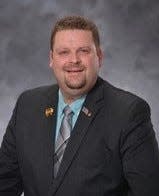Bring to life Wildlife Crossings Investment Act
We have all experienced it. Driving on Oregon’s rural roads or cutting highways, and a deer jumps out in front of our car. It happens in the blink of an eye, but the damages can be long-lasting.
The Oregon Department of Transportation documented 30,951 wildlife-vehicle collisions between 2017 and 2021, with many more collisions going unreported. These collisions result in damage, injuries and fatalities to motorists and impact our state’s iconic wildlife. This is compounded by financial impacts such as vehicle damage, medical expenses and lost hunting value. Accounting for such factors, the estimated cost of collisions with mule deer and elk in Oregon reached $56.9 million in 2020 alone.
Yet the consequences of hitting wildlife can go far deeper. Vehicle damage, for example, can affect your ability to get to work, take your child to school or pick up groceries. Similarly, collisions threaten the health and resilience of our native wildlife populations. That’s why, in a time when it seems like Republicans and Democrats can’t agree on much, we are proud to collaborate on this important priority.
After championing House Bill 2834 to unanimous passage in 2019 to create a Wildlife Corridor Action Plan, we are sponsoring House Bill 4130 (the Wildlife Crossings Investment Act) in the 2022 session of the Oregon Legislature.

House Bill 4130 is supported by a broad coalition and, if passed, will invest $7 million in strategic projects that reduce wildlife collisions across the state. Additionally, these funds could leverage federal grant funding available in the bipartisan Infrastructure Investment and Jobs Act of 2021.
Investments like the Wildlife Crossings Investment Act are urgently needed. Oregon has the highest likelihood of wildlife crashes among West Coast states, according to a recent State Farm insurance analysis. And it’s no wonder – the Beaver State only has five wildlife crossings, significantly fewer than other western states. For example, Colorado has 69, and Utah and California each have 50. It is time for Oregon to bridge this gap and make our roads safer for people and animals.
Wildlife crossing proposal: Bill would put $5 million toward safe road crossings to protect wildlife from vehicles
But don’t just take our word for it. Wildlife crossings across the country show high rates of return on investments. Oregon’s Lava Butte underpass near Bend has reduced wildlife-vehicle collisions by more than 85 percent, and there are numerous places around the state with similarly pressing needs. As one example, the Burns Paiute Tribe has been working for several years to find funding for highway retrofits that allow deer to more easily cross Highway 20 near the Tribe’s property along the Malheur River Canyon.
House Bill 4130 recently received a unanimous vote of support in the House Committee on Environment and Natural Resources. We hope to see ongoing bipartisan support carry the bill forward to passage in coming weeks, making our roads safer for all.

Rep. Ken Helm, D- Beaverton, District 34 covering Beaverton. You may reach him at Rep.KenHelm@oregonlegislature.gov Rep. David Brock Smith, R-Port Orford, represents District 1 covering southwest Oregon. You may reach him at Rep.DavidBrockSmith@oregonlegislature.gov
This article originally appeared on Salem Statesman Journal: Bring to life Wildlife Corridor Action Plan

